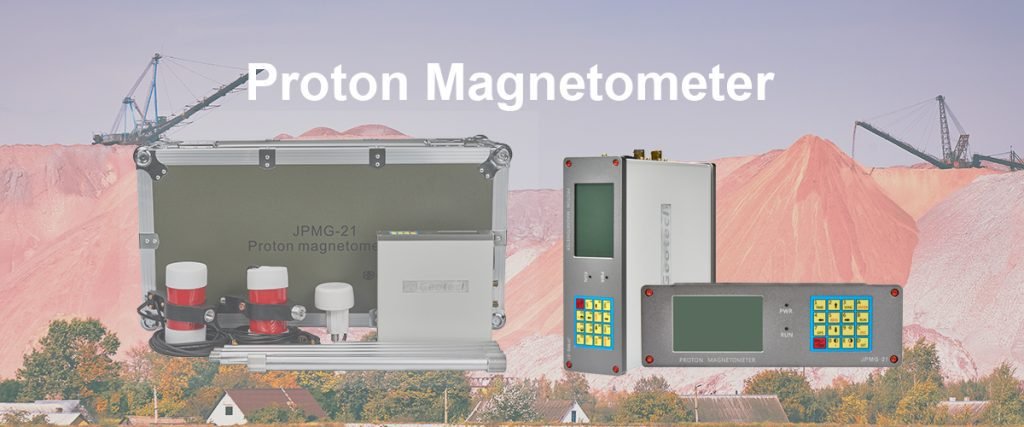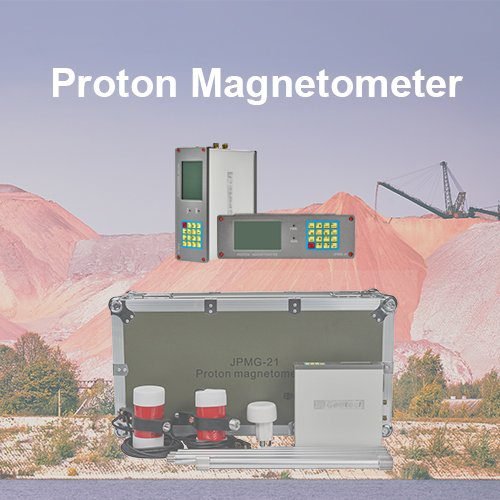Welcome to Geotech!

Magnetometer Applications in Geophysical Research: Proton Magnetometer Insights
TIPS:Dive into how magnetometers, especially proton magnetometers, serve as pivotal survey tools in geophysical research. These devices, crucial for geophysic surveys, detect tiny magnetic field changes. Learn how proton magnetometers enable on – site geophysical exploration, from remote archaeological sites to rugged terrains, kick – starting insights into Earth’s magnetic secrets.

Ⅰ. Introduction to Magnetometers in Geophysics
Magnetometers, especially proton magnetometers (or proton precession magnetometers), are key survey tools in geophysical research. A proton magnetometer detects tiny changes in the Earth’s magnetic field. It’s vital for geophysical surveys.
In geophysical exploration, proton magnetometers play a big role. They’re used in electromagnetic surveys and magnetic gradient surveying. For example, in magnetic gradient surveying, a high – sensitivity magnetometer measures magnetic field differences over short distances. This helps find subsurface structures.
Geomagnetic survey equipment, including portable magnetic gradiometers and magnetometers, lets geophysicists work on – site easily. These portable devices can go to remote archaeological sites for magnetometry archeology or rugged terrains for subsurface exploration.
Ⅱ. Proton Magnetometer Working Principle
1. Proton Precession Basics
A proton magnetometer relies on hydrogen protons in a magnetic field. When a strong external field is applied to a hydrogen – containing sample (like water in the instrument), protons align with it. When the field is removed, protons precess around the Earth’s magnetic field at a set frequency. Measuring this frequency tells us the magnetic field strength. It follows the Larmor equation.
2. Advantages in Geophysical Surveys
Proton magnetometers are high – sensitivity. They detect small magnetic field changes. In geophysical research, this is key for mapping the Earth’s crust magnetic field. For example, in mineral exploration, they find subtle magnetic anomalies from different rocks, hinting at valuable minerals.
Ⅲ. Applications in Geophysical Projects
1. Subsurface Structure Exploration
Magnetometers, especially proton ones, help find underground structures. In geophysical projects, they show the shape and location of these structures. For oil and gas exploration, they analyze rock layer magnetic properties. Proton magnetometers detect magnetic signatures of geological formations, creating a subsurface picture.
They also help study fault lines and geological boundaries. High – sensitivity magnetometers measure magnetic field changes across these boundaries. This info assesses seismic risks and geological history.
2. Magnetic Field Modeling
Geophysicists use magnetometer data (especially from proton ones) to build magnetic field models. These models show Earth’s magnetic field distribution. In studying core – mantle interactions, they give insights into Earth’s interior.
These models help navigation and resource exploration. Understanding local magnetic field variations improves navigation in GPS – weak areas. In resource exploration, they target areas with potential deposits based on magnetic anomalies.
3. Magnetometry in Archeology
Magnetometry archeology benefits from magnetometers, like proton ones. Archeologists use them to find magnetic anomalies in soil, indicating ancient structures or artifacts. Proton magnetometers cover large areas quickly and accurately. Portable setups, with magnetic gradiometers, work in various terrains. This non – invasive method preserves sites while giving subsurface info.
Ⅳ. Case Studies of Magnetometer Use
1. Mineral Exploration Project
In a remote mountain mineral project, a proton magnetometer was used. It detected magnetic anomalies linked to potential deposits. High – sensitivity measurements found subtle rock magnetic changes. Geophysicists did magnetic gradient surveying, identifying high – susceptibility areas.
[Add more details: How data guided drilling, compared to other tools, etc.]
2. Archeological Survey in a Historical Region
An archeological team used a proton magnetometer in a historical area. A portable magnetic gradiometer and proton magnetometer surveyed the land. They found anomalies leading to ancient foundations and burial grounds. Data guided excavation plans, focusing on promising areas.
Ⅴ. Comparison with Other Geomagnetic Survey Equipment
1. Proton Magnetometers vs. Other Types
Proton magnetometers have advantages over others. Compared to fluxgate magnetometers, they offer higher accuracy in remote areas. But fluxgate ones have faster response in dynamic situations.
For large – scale surveys, proton magnetometers are cost – effective. Their simple design suits long – term projects. Unlike expensive SQUID magnetometers (needing cryogenic cooling), proton ones are practical for most tasks.
2. Role in Electromagnetic Surveys
In electromagnetic surveys, proton magnetometers work with other tools. They measure magnetic field components affected by electromagnetic signals. In time – domain surveys, they detect secondary fields from subsurface conductors. This data, with primary field info, interprets subsurface material properties for exploration and mapping.
Ⅵ. Future Trends in Magnetometer Technology for Geophysics
1. Miniaturization and Portability
Future proton magnetometers will be smaller and more portable. Smaller, lightweight devices will work in tough environments (like narrow boreholes). Integrated portable magnetic gradiometers will boost survey efficiency.
2. Integration with Other Technologies
Combining proton magnetometer data with GPS and remote sensing gives better subsurface insights. AI and machine learning will process data, finding complex patterns quickly. This improves research and exploration efficiency.
3. Advancements in Sensitivity and Accuracy
R & D will boost proton magnetometer sensitivity and accuracy. New materials cut noise, enabling precise measurements. This helps archeology (finding subtle anomalies) and mineral exploration (detecting valuable deposit signatures).
Reference
- Society of Exploration Geophysicists (SEG) https://seg.org/
- Society of Environmental and Engineering Geophysicists (EEGS) https://www.eegs.org/
- Geology and Equipment Branch of China Mining Association http://www.chinamining.org.cn/
- International Union of Geological Sciences (IUGS) http://www.iugs.org/
- European Geological Survey Union (Eurogeosurveys) https://www.eurogeosurveys.org/
-1.png)




